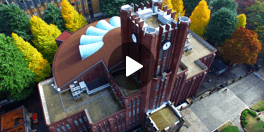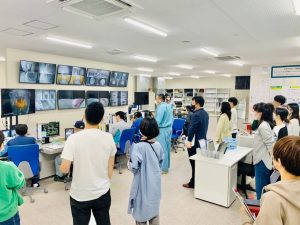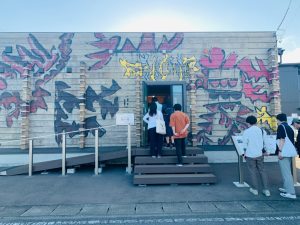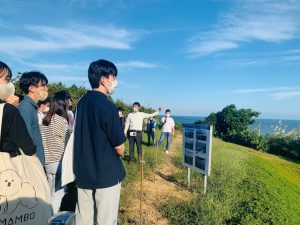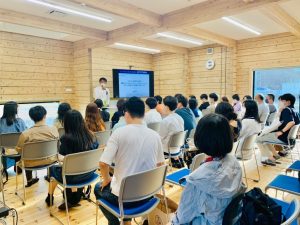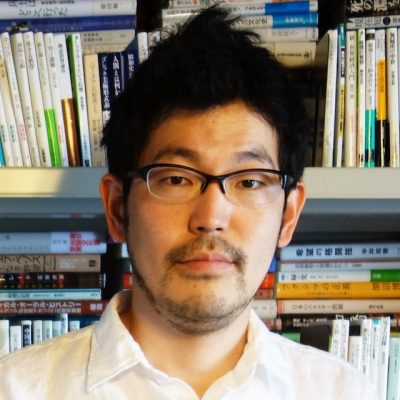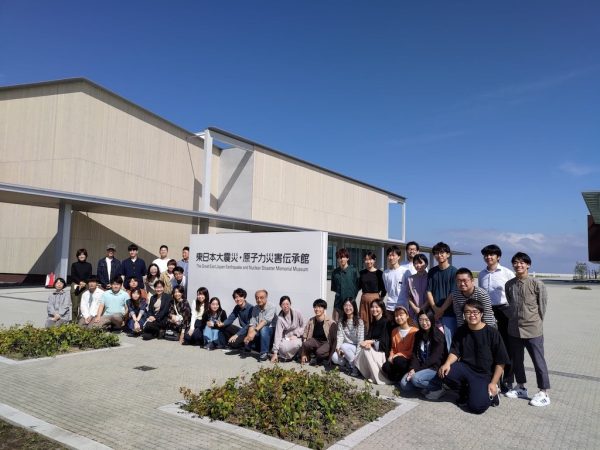
November 29, 2022
福島の現在を学ぶLearning about the Present in Fukushima
2011年3月11日の地震・津波・原発事故の三重の災害から11年半あまりたった9月26日から28日。情報学環教育部および学際情報学府の講義の一環として福島の現在を学ぶ「福島スタディーツアー」が行われ、32名の学生が参加しました。復旧・復興に向き合い続ける人たちを訪ね歩きつつ、そこに残る課題と可能性、自分たちにできることは何かといった議論を進めました。
ツアーで見学に訪れた場所のうち、現在廃炉作業中の福島第一原発や、除染によって発生した除去土壌等が運び込まれてきた中間貯蔵施設はまさに「復旧」を行っている場所です。印象に残ったのは双葉町と大熊町にまたがる中間貯蔵施設を案内してくださったガイドの方が、「作業は順調に進んでいます」と何度も話されていたことです。除染作業で発生した約1400万立方メートルもの除去土壌。県外最終処分に向けてこの除去土壌を減容化し可能なものを再生利用するという途方もない計画は、11年という年月をかけてゆっくりとしかし着実に進んでいます。
一方で「小高パイオニアヴィレッジ」や「とみおかワインドメーヌ」は「復興」のための試みを行っている場所でした。福島県南相馬市のコワーキングスペース「小高パイオニアヴィレッジ」で起業支援をされている但野謙介さんは、震災の翌年のまだ混乱が残る時期から「復旧産業」が縮小した後の「復興産業」の創出が重要だ、と提言していました。
一時は全町にわたって立ち入り禁止となった富岡町で、2016年から町の新たな文化を作ろうとワイン作りへのチャレンジを始めたという遠藤秀文さんは、「一番おいしいワインが飲めるのは次の世代の人たちだろう」と話していました。それぞれが、先の見えない中でも理想をうちたて、それを具現化し、また遠い将来まで見据えて活動している姿が「復興」の現在に見えました。11年かけて災害からの復旧が進んだからこそ新たに生じる課題も多く、その解決のためにまた新たに多くの試みが福島ではなされていました。
三日間で知れたのはほんの一部だと思いますが、それでも福島の現在をこの目でみることができるとても貴重な体験になりました。
川口翔太郎(教育部研究生)
From September 26 to 28, 2022, a little more than 11 and a half years after the triple disasters of the earthquake, tsunami, and nuclear power plant accident of March 11, 2011, 32 students participated in the “Fukushima Study Tour” to learn about the current situation in Fukushima as part of lectures given by the Interfaculty Initiative in Information Studies and the Graduate School of Interdisciplinary Information Studies. While visiting people who have been dealing with recovery and reconstruction, the students discussed the challenges and possibilities that remain, and what they can do to help.
The places visited during the tour represented the twin aspects of “restoration” and “reconstruction”. Places devoted to the “restoration” effort included the Fukushima Daiichi Nuclear Power Plant, which is currently in the process of being decommissioned, and the interim storage facility for soil and other materials generated by decontamination. I was impressed by the guide who showed us around the interim storage facilities, which straddle Futaba Town and Okuma Town, repeatedly telling us that “the work is progressing smoothly.” Approximately 14 million cubic meters of removed soil has been generated by the decontamination work. The tremendous plan to reduce the volume of this removed soil and recycle what is available for final disposal outside the prefecture has been progressing slowly but steadily over the past 11 years.
Meanwhile, places where “reconstruction” was being attempted included “Odaka Pioneer Village” and “Tomioka Wine Domaine”. Kensuke Tadano, who supports entrepreneurship at the Odaka Pioneer Village, a coworking space in the city of Minamisoma, suggested that it was important to create a “reconstruction industry” after the “recovery industry” had shrunk since the first year of confusion following the disaster. In Tomioka Town, whose entire area was temporarily off-limits, Shubun Endo, who in 2016 began the challenge of making wine in an attempt to create a new culture for the town, said, “The next generation will be the ones who can drink the most delicious wine.” The present “reconstruction” efforts showed that each of the participants, despite their uncertain future, have set themselves ideals and are working to realize those ideals, while also looking ahead to the distant future.
There are many new issues that have arisen because of the progress made in recovery from the disaster over the past 11 years, and many new attempts are being made in Fukushima to solve these issues. I think I was able to learn only a small part of what has been happening in Fukushima over the three days of the tour, but even so, it was a very valuable experience for me to see the present state of Fukushima with my own eyes.
Text: Shotaro Kawaguchi (Undergraduate research student)
English proofreading: David Buist (Project senior specialist)
主担当教員Associated Faculty Members
准教授
開沼 博
- 社会情報学コース
Associate Professor
KAINUMA, Hiroshi
- Socio-information and communication studies course

